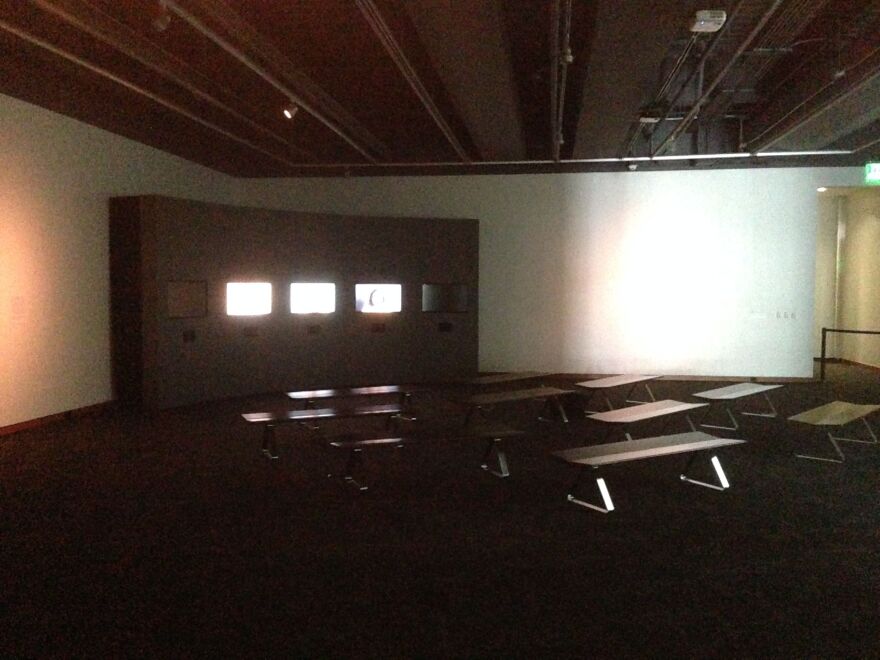The Harvey B. Gantt Center in uptown Charlotte is currently hosting a video installation called “Question Bridge: Black Males.”
Filmmakers spent countless hours over 4 years recording black men asking questions for others of their race and gender. Then they played the video to other black men and recorded their answers. The result is a 3 hour loop the creators call a “Question Bridge.”

In a large room at the Gantt Center, 5 video screens are mounted on a round black panel. Viewers sit on benches arranged to make them feel like they’re part of a circle.
The idea is to highlight the range of personalities and insight that exist(s) among black males. The artists behind the exhibit, both themselves black males, believe that too often, black men are pigeonholed by the media as being one in the same.
Those artists are photography professors Chris Johnson of the California College of the Arts in Oakland and Bayete Ross Smith of NYU.
SMITH: I would say, you know, we focused on black males for this because we were thinking about how black males are one of the groups that are very prominent in media, but very rarely in control of the images and stories that are used to define them. We also felt that black males are one of the groups in our society that have very loaded associations with them. Whether someone is a black male or not, they still have very specific and significant ideas about what a black man is. That then allows us to kind of explode this idea that a demographic is one thing.
MCFADYEN: So when you say you wanted to “explode the demographic,” you specifically narrowed the focus to how how much diversity is actually there.
JOHNSON: As you can tell, there’s a methodology underneath this project that could be applied to any demographic, as Bayete said. So it made sense for us as black male artists to use a demographic we understood very well.
MCFADYEN: Where did you find all the males that participated?
SMITH: The short answer is we looked everywhere, like fare and wide, for every type of black man and black male that we could find.
MCFADYEN: How much tape did you have to go through, how much editing went into the 3 hour loop that plays at the Gantt Center?
SMITH: Hours and hours of footage, maybe to give numbers there’s maybe 1500 question and answer exchanges. When we made the original exhibit it was very hard to whittle it down to three hours. The original installation could’ve easily been six or seven hours. SO it was a lot of kind of like creating a script, scriptwriting and workshopping once we had to create the final piece.
JOHNSON: You might think that there is a best representative answer to a given question. That turned out not to be true, and it turned out to be one of the really important dynamics of the project as a whole. There turned out to be, let’s say, three or four or five really best answers to a given question, and they sometimes contradicted each other and were very different, but the process just naturally created this rainbow of different answers. So what that shows is that if you’re trying to give a view of black male consciousness, you come away with a spectrum, which is of course not surprising. It’s only that we impose monolithic notions of what black men think and feel and what a black man is that makes us think that there’s any right answer to a given question.
The Question Bridge: Black Males” installation will be at the Gantt Center through June. There’s more information at questionbridge.com



